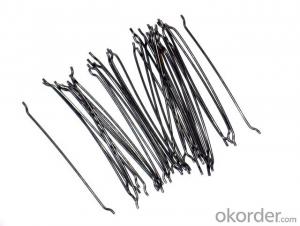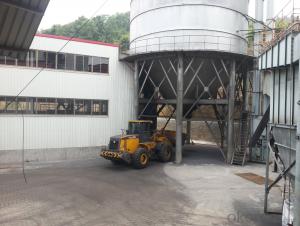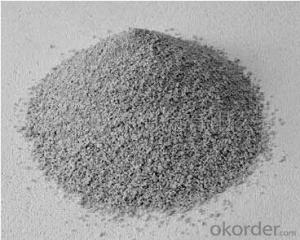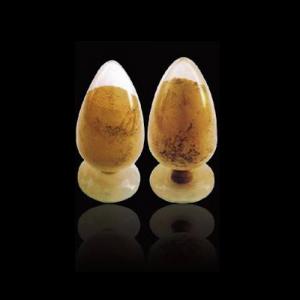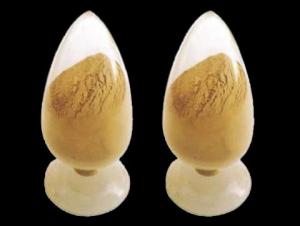Slide Gate Plates for Ladle & Tundish
- Loading Port:
- Shanghai
- Payment Terms:
- TT OR LC
- Min Order Qty:
- 10 set
- Supply Capability:
- 50000 set/month
OKorder Service Pledge
OKorder Financial Service
You Might Also Like
Specifications
Ladle Sliding Plate
1.Competitive price
2.Manufacture
3.Worldwide customers
4.Long service life
Slide gate plate Information
Alumina-carbon slide gate plate is characterized by high strength, erosion resistance and good thermal shock resistance. They are preferred products for large/middle ladle and continuous casting tundish. They can meet the needs of different steel grades.
Features:
1. Tundish Slide Gate Plate
2. Tundish Slide Gate Plate with good performance
3.long service life
4.fit for tundish
5. original manufacturer with own r&d team
6. good reputation at home & abroad
7. with competitive price
Application
They are preferred products for large/middle ladle and continuous casting tundish. They can meet the needs of different steel grades.
Burned slide plate ladle refractory brick 1. Passed ISOcertified 2.have a good reputation on both domestic and oversea country
Physicochemical indexes :
ITEM | Al-C Slide Plate | Al-Zr-C Slide Plate | ||||||
70 | 75 | 80 | 85 | 86 | 70 | 75 | 77 | |
Al2O3,% | 70 | 75 | 80 | 85 | 86 | 70 | 75 | 77 |
C,% | 7 | 7 | 5 | 5 | 4 | 7 | 7 | 7 |
ZrO2,% | - | - | - | - | - | 6 | 6 | 2.5 |
A.P.,%≤ | 10 | 10 | 10 | 10 | 7 | 10 | 10 | 10 |
B.D.,g/cm3 | 2.8 | 2.9 | 2.9 | 3.0 | 2.95 | 3.00 | 3.05 | 2.90 |
C.C.S., MPa ≥ | 65 | 70 | 100 | 100 | 100 | 110
| 115 | 100 |
- Q:How are monolithic refractories inspected and tested for quality assurance?
- Monolithic refractories are inspected and tested for quality assurance through a series of rigorous processes to ensure their reliability and performance. These inspections and tests are crucial in maintaining consistent quality standards and identifying any potential defects or weaknesses in the refractory material. Firstly, visual inspections are conducted to check for any visible defects such as cracks, spalling, or signs of poor manufacturing. This step helps identify any obvious issues that may affect the refractory's performance. Next, physical properties such as density, porosity, and thermal conductivity are measured using specialized equipment. These measurements are compared against predetermined standards to ensure the refractory material meets the required specifications. Density and porosity are important indicators of the refractory's strength and resistance to heat and chemicals, while thermal conductivity determines its ability to transfer heat efficiently. In addition, mechanical tests are performed to assess the refractory's strength and resistance to mechanical stress. This involves subjecting the material to compressive, tensile, and flexural forces to evaluate its structural integrity and durability. To ensure the refractory's performance in high-temperature environments, thermal tests are conducted. These tests involve exposing the refractory to extreme temperatures and monitoring its behavior. Thermal expansion and shrinkage, resistance to thermal shock, and thermal cycling are some of the parameters evaluated during these tests. Chemical analysis is another important aspect of quality assurance for monolithic refractories. Samples of the refractory material are analyzed to determine their chemical composition and assess their resistance to various corrosive environments. This analysis helps ensure that the refractory is suitable for the specific applications it will be used in. Lastly, field tests may be conducted at actual operating sites to evaluate the refractory's performance under real-world conditions. These tests involve monitoring the refractory's behavior in terms of wear and tear, thermal insulation, and resistance to chemical attack. The results obtained from field tests are crucial in validating the refractory's performance and making any necessary adjustments to the manufacturing process. Overall, monolithic refractories undergo a comprehensive inspection and testing process, encompassing visual inspections, physical and mechanical tests, thermal analysis, chemical analysis, and field tests. This systematic approach ensures that the refractories meet the required quality standards, providing reliability and longevity in the demanding environments they are designed for.
- Q:What are the key characteristics of monolithic refractories for electric arc furnace applications?
- Monolithic refractories for electric arc furnace applications have several key characteristics that make them suitable for the harsh conditions and high temperatures encountered in these environments. Firstly, monolithic refractories offer excellent thermal shock resistance. Electric arc furnaces operate at extremely high temperatures, and the rapid temperature changes that occur during the melting and refining processes can cause significant thermal stress. Monolithic refractories are designed to withstand these thermal shocks without cracking or spalling, ensuring the longevity and performance of the lining. Secondly, monolithic refractories have high resistance to chemical attack. Electric arc furnaces involve the melting and refining of various metals and alloys, which can create highly corrosive atmospheres. Monolithic refractories are formulated with chemically inert materials and additives that provide resistance to the corrosive effects of molten metals and slag, protecting the lining from chemical degradation. Another important characteristic of monolithic refractories for electric arc furnace applications is their high refractoriness. Refractoriness refers to the ability of a material to retain its strength and integrity at high temperatures. Electric arc furnaces typically operate at temperatures above 1500°C, and monolithic refractories are designed to withstand these extreme conditions without significant loss of properties or degradation. Furthermore, monolithic refractories offer good thermal conductivity. This property allows for efficient heat transfer throughout the lining, ensuring uniform heating and melting of the charge material. It also helps to minimize hot spots and thermal gradients, which can lead to uneven wear and premature failure of the lining. Lastly, monolithic refractories are known for their ease of installation and repair. Unlike traditional brick or block refractories, monolithic materials can be cast, sprayed, or rammed into place, eliminating the need for complex masonry work. This not only saves time and labor but also allows for easy maintenance and repair of the lining, reducing downtime and improving overall furnace efficiency. In summary, the key characteristics of monolithic refractories for electric arc furnace applications include excellent thermal shock resistance, high chemical resistance, high refractoriness, good thermal conductivity, and ease of installation and repair. These properties make monolithic refractories ideal for withstanding the harsh conditions and demanding requirements of electric arc furnace operations.
- Q:How do monolithic refractories withstand thermal cycling in the iron and steel industry?
- Monolithic refractories are designed to withstand thermal cycling in the iron and steel industry due to their unique composition and properties. These refractories are made from a single, continuous material, unlike traditional refractory bricks that are made by stacking individual bricks together. One of the main reasons monolithic refractories are able to withstand thermal cycling is their ability to expand and contract without cracking or damage. This is due to their high thermal shock resistance, which is a measure of their ability to withstand rapid temperature changes. Monolithic refractories are specially formulated to have low thermal conductivity, allowing them to resist the transfer of heat and minimize thermal gradients within the material. In addition, monolithic refractories have excellent thermal stability, which means they can maintain their structural integrity and mechanical strength even at high temperatures. This is crucial in the iron and steel industry, where temperatures can reach extreme levels. The refractories are able to withstand repeated heating and cooling cycles without undergoing significant structural changes or degradation. Furthermore, monolithic refractories have good corrosion resistance, which is important in an environment where they come into contact with molten metal and various chemical agents. Their composition and special additives help to protect the refractory material from chemical attack, preventing erosion and prolonging their lifespan. The manufacturing process of monolithic refractories allows for easy installation and repair, as they can be applied as a liquid or a semi-liquid mixture. This reduces the risk of joints or weak points that could lead to thermal stress or failure during thermal cycling. Overall, the combination of high thermal shock resistance, low thermal conductivity, excellent thermal stability, corrosion resistance, and easy installation makes monolithic refractories highly durable and capable of withstanding the severe thermal cycling conditions in the iron and steel industry.
- Q:How do monolithic refractories perform in high-temperature environments?
- Due to their unique characteristics, monolithic refractories are highly effective in high-temperature environments. Unlike traditional refractories made of multiple bricks or tiles, these refractories are composed of a single, continuous composition. This monolithic structure offers several advantages when it comes to performance in high-temperature conditions. First and foremost, monolithic refractories exhibit excellent thermal shock resistance. They can endure rapid temperature changes without cracking or spalling. While high temperatures can impose significant stress on materials, the monolithic structure allows for better expansion and contraction, minimizing the risk of damage. Furthermore, monolithic refractories possess high resistance to chemical attack. In high-temperature environments, aggressive chemical agents are often present, which can corrode and erode traditional refractory materials. However, the monolithic composition is typically designed to be chemically inert, creating a protective barrier against these corrosive elements. Moreover, monolithic refractories offer superior strength and durability at high temperatures. Their single composition ensures a dense and compact structure, reducing the likelihood of cracking or breaking under extreme thermal conditions. This strength enables them to maintain their integrity and performance even in the most demanding environments. Additionally, monolithic refractories can be easily installed and repaired. Unlike traditional refractories that demand precise brick or tile placement, monolithic materials can be poured or sprayed into place, adapting to any shape or size. This flexibility expedites installation, making it more cost-effective and reducing downtime and maintenance costs. Overall, monolithic refractories excel in high-temperature environments due to their thermal shock resistance, chemical inertness, durability, and ease of installation. Their capacity to withstand extreme heat and harsh conditions makes them the preferred choice for industries such as steel, cement, glass, and petrochemicals, where high temperatures are prevalent.
- Q:What are the challenges in repairing and maintaining monolithic refractories?
- There are several challenges associated with repairing and maintaining monolithic refractories. One major challenge is the complex nature of the materials used in monolithic refractories. These materials are often a combination of several components, including aggregates, binders, and additives. The selection and proportioning of these components can greatly impact the performance and durability of the refractory, making it difficult to determine the exact repair or maintenance method. Another challenge is the high temperatures at which monolithic refractories operate. These materials are designed to withstand extreme heat, which can range from several hundred to several thousand degrees Celsius. Repairing or maintaining monolithic refractories at such high temperatures requires specialized equipment and techniques to ensure the safety of the workers and the integrity of the repair. Additionally, monolithic refractories are often exposed to harsh environments, such as corrosive gases, chemical reactions, and mechanical stresses. These factors can lead to degradation and damage over time, requiring regular inspections and maintenance. Identifying and addressing these issues in a timely manner can be challenging, as the damage may not always be visible or easily accessible. Furthermore, monolithic refractories are commonly used in complex industrial processes, such as steelmaking, cement manufacturing, and petrochemical production. These processes often involve continuous operation, which limits the time available for repairs and maintenance. Finding suitable windows of opportunity for maintenance and coordinating the shutdowns of these processes can be a logistical challenge. Lastly, the cost of repairing and maintaining monolithic refractories can be significant. The materials used in monolithic refractories can be expensive, and the labor and equipment required for repairs and maintenance can add up. Balancing the cost of repairs with the need to maintain productivity and extend the service life of the refractories can be a challenge for plant operators and maintenance teams. In conclusion, the challenges in repairing and maintaining monolithic refractories stem from the complex nature of the materials, the high temperatures involved, the harsh operating environments, the complexity of industrial processes, and the cost considerations. Overcoming these challenges requires expertise, careful planning, and effective coordination to ensure the longevity and performance of monolithic refractories.
- Q:What are the main factors affecting the thermal expansion of monolithic refractories?
- The thermal expansion of monolithic refractories is influenced by various factors. These factors comprise the type of refractory material, the temperature range, the chemical composition, and the physical structure of the refractory. To begin with, the thermal expansion behavior of a refractory is significantly determined by its type of material. Different types of refractories, such as alumina-based, silica-based, and magnesia-based refractories, possess varying coefficients of thermal expansion (CTE). For instance, alumina-based refractories generally exhibit a lower CTE in comparison to silica-based refractories. Consequently, the choice of refractory material holds great influence over its thermal expansion characteristics. Secondly, the thermal expansion of a refractory is affected by the temperature range to which it is exposed. As the temperature rises, the refractory material expands due to the absorption of thermal energy. However, different refractories demonstrate different expansion behaviors depending on temperature. Some refractories may exhibit a linear or near-linear expansion with temperature, while others may display non-linear or step-wise expansion. Hence, the temperature range of operation is a critical factor in determining the suitability of a refractory for a specific application. The chemical composition of the refractory also has an impact on its thermal expansion. The presence of various chemical elements and compounds in the refractory material can influence its expansion behavior. For instance, the addition of specific oxides, like magnesia or zirconia, can modify the CTE of the refractory. Similarly, impurities or variations in the chemical composition can introduce discrepancies in expansion characteristics among refractories of the same type. Lastly, the physical structure of the refractory, encompassing factors such as porosity, density, and microstructure, can influence thermal expansion. The existence of open or closed pores within the refractory can affect its ability to expand uniformly under thermal stress. The density of the refractory also plays a role, as denser refractories tend to have lower thermal expansion. Moreover, the microstructure, including grain size and orientation, can impact the overall expansion behavior of the refractory. To conclude, the primary factors influencing the thermal expansion of monolithic refractories include the type of refractory material, temperature range, chemical composition, and physical structure. A comprehensive understanding of these factors is crucial in selecting the appropriate refractory for a specific application to ensure optimal performance and durability.
- Q:What are the considerations for repairing and patching monolithic refractories?
- Considerations for repairing and patching monolithic refractories include assessing the extent of the damage, identifying the cause of the damage, selecting the appropriate repair material, ensuring proper bonding and curing, and following manufacturer's instructions and recommended procedures. Additionally, factors such as temperature, chemical exposure, and mechanical stress should be taken into account to ensure the repaired refractory maintains its performance and longevity.
- Q:How do monolithic refractories contribute to reducing emissions in iron and steel processes?
- Monolithic refractories play a crucial role in reducing emissions in iron and steel processes by providing superior insulation, increased energy efficiency, and improved control over the production process. These refractories are designed to withstand extreme temperatures and harsh conditions, effectively minimizing heat loss and reducing the need for excessive fuel consumption. By creating a highly insulated environment, monolithic refractories enable better temperature control, leading to optimized combustion and reduced emissions of greenhouse gases. Additionally, their high resistance to wear and corrosion helps prevent the formation of pollutants, thereby contributing to a cleaner and more sustainable iron and steel industry.
- Q:What are the different techniques for installing monolithic refractories?
- There are several techniques for installing monolithic refractories, each with its own advantages and suitability for different applications. Some of the common techniques include: 1. Casting: In this technique, the refractory material is mixed with water or a binder to form a slurry. The slurry is then poured into molds or directly onto the prepared surface. The material is allowed to set and harden, forming a solid monolithic structure. 2. Gunning: Gunning involves spraying the refractory material onto the surface using a gunning machine. The material is mixed with water or a binder to form a wet mix, which is then propelled onto the surface at high velocity. This technique is commonly used for repairing or lining larger areas and can be done onsite. 3. Ramming: Ramming involves compacting the refractory material into place using a pneumatic or manual ramming tool. The material is typically preheated to reduce moisture content and increase workability. This technique is often used for lining smaller areas or for filling gaps between bricks or precast shapes. 4. Shotcreting: Shotcreting is a technique similar to gunning, but it involves using a dry mix of refractory material. The dry mix is combined with water or a binder just before it is sprayed onto the surface using a high-pressure nozzle. Shotcreting is commonly used for lining larger areas or for creating complex shapes. 5. Troweling: Troweling involves applying the refractory material onto the surface using a trowel or a similar tool. The material is typically a wet mix and is spread and smoothed manually. This technique is often used for patching or repairing small areas or for finishing touches. 6. Vibrating: Vibrating involves using a vibrating tool or a vibrator to compact the refractory material and remove air pockets. This technique is commonly used for improving the density and strength of the monolithic refractory after it has been installed using other techniques. It is important to note that the selection of the technique depends on various factors such as the type of refractory material, the size and shape of the area to be lined, and the specific requirements of the application. Additionally, proper preparation of the surface and adherence to installation guidelines are crucial for ensuring the effectiveness and longevity of the monolithic refractory.
- Q:How do monolithic refractories improve the efficiency of ladle and tundish preheating furnaces?
- Monolithic refractories greatly contribute to the efficiency of ladle and tundish preheating furnaces. These refractories, made from a single material, are easily installed, repaired, and replaced, making them versatile and cost-effective. The efficiency of these furnaces is improved thanks to the outstanding thermal insulation properties of monolithic refractories. With low thermal conductivity, they effectively retain heat and prevent its escape. This insulation capability ensures an efficient preheating process, reducing energy consumption and costs by minimizing heat loss. Additionally, monolithic refractories possess high thermal shock resistance, which is crucial in ladle and tundish preheating furnaces. These furnaces experience rapid temperature changes during the pouring of molten metal, which can lead to cracking or failure of traditional refractories. However, monolithic refractories are specifically designed to withstand thermal shock, remaining intact and maintaining their insulating properties even in extreme conditions. This durability reduces downtime and maintenance requirements, thus enhancing overall efficiency. Furthermore, monolithic refractories provide a seamless and uniform lining surface, improving heat transfer within the furnace. The absence of joints or seams reduces the risk of heat leakage and ensures even distribution of heat throughout the lining. This promotes uniform heating of the ladle or tundish, allowing for more efficient preheating and better temperature control. In conclusion, the use of monolithic refractories in ladle and tundish preheating furnaces results in improved efficiency due to their exceptional thermal insulation properties, high thermal shock resistance, and ability to provide a seamless and uniform lining. These refractories minimize heat loss, reduce energy consumption, and enhance the overall performance of the preheating process.
1. Manufacturer Overview |
|
|---|---|
| Location | |
| Year Established | |
| Annual Output Value | |
| Main Markets | |
| Company Certifications | |
2. Manufacturer Certificates |
|
|---|---|
| a) Certification Name | |
| Range | |
| Reference | |
| Validity Period | |
3. Manufacturer Capability |
|
|---|---|
| a)Trade Capacity | |
| Nearest Port | |
| Export Percentage | |
| No.of Employees in Trade Department | |
| Language Spoken: | |
| b)Factory Information | |
| Factory Size: | |
| No. of Production Lines | |
| Contract Manufacturing | |
| Product Price Range | |
Send your message to us
Slide Gate Plates for Ladle & Tundish
- Loading Port:
- Shanghai
- Payment Terms:
- TT OR LC
- Min Order Qty:
- 10 set
- Supply Capability:
- 50000 set/month
OKorder Service Pledge
OKorder Financial Service
Similar products
New products
Hot products
Hot Searches
Related keywords









